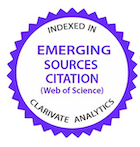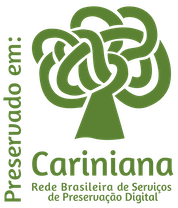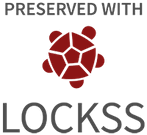Densidade planctônica do policultivo de litopenaeus vannamei e oreochromis niloticus
DOI:
https://doi.org/10.1590/1089-6891v18e-16840Palavras-chave:
camarão, tilapia, fitoplâncton, zooplânctonResumo
Um experimento foi realizado durante 95 dias para avaliar as densidades planctônicas do policultivo do camarão branco Litopenaeus vannamei e da tilápia do Nilo Oreochromis niloticus. O delineamento experimental foi inteiramente casualizado com seis tratamentos e quatro repetições cada. Os tratamentos foram: monocultivo com 10 camarões m² (10S:0T); policultivo com 10 camarões e 0,5 tilápia m² (10S:0.5T); policultivo com 10 camarões e 1 tilapia m² (10S:1T); monocultivo com 2 tilápias m² (2T:0S); policultivo com 2 tilápias e 2,5 camarões m² (2T:2,5S); e policultivo com 2 tilápias e 5 camarões m² (2T:5S). Não foi realizada troca de água e nem fornecimento de aeração artificial durante o período experimental, apenas utilizou-se água para completar o volume perdido pela evaporação. O fitoplâncton variou de 78.981 a 303.260 cél.mL-1 e o zooplâncton variou de 470 a 1.421 org.L-1. Os grupos mais frequentes foram Bacillariophyta (fitoplâncton) e Rotífera (zooplâncton). Pode-se concluir que em sistema de policultivo do camarão branco (Litopenaeus vannamei) e a tilápia do Nilo (Oreochromis niloticus) não ocorrem modificações significativas nas densidades do fitoplâncton e zooplâncton em decorrência da alteração das densidades de estocagem do cultivo.Palavras-chave: camarão; fitoplâncton; tilapia; zooplâncton.
Downloads
Não há dados estatísticos.
Publicado
2017-06-02
Como Citar
BRITO, Luis Otavio; SIMÃO, Bruno Rodrigo; NETO, João Batista Pereira; CEMIRAMES, Gabriela; AZEVEDO, Celicina Maria Da Silveira Borges De. Densidade planctônica do policultivo de litopenaeus vannamei e oreochromis niloticus. Ciência Animal Brasileira / Brazilian Animal Science, Goiânia, v. 18, 2017. DOI: 10.1590/1089-6891v18e-16840. Disponível em: https://revistas.ufg.br/vet/article/view/e-16840. Acesso em: 24 dez. 2025.
Edição
Seção
RECURSOS PESQUEIROS E ENGENHARIA DE PESCA
Licença

Este trabalho está licenciado sob uma licença Creative Commons Attribution 4.0 International License.
Autores que publicam nesta revista concordam com os seguintes termos:
- Autores mantém os direitos autorais e concedem à revista o direito de primeira publicação, com o trabalho simultaneamente licenciado sob a Licença Creative Commons Attribution que permite o compartilhamento do trabalho com reconhecimento da autoria e publicação inicial nesta revista.
- Autores têm autorização para assumir contratos adicionais separadamente, para distribuição não-exclusiva da versão do trabalho publicada nesta revista (ex.: publicar em repositório institucional ou como capítulo de livro), com reconhecimento de autoria e publicação inicial nesta revista.
- Autores têm permissão e são estimulados a publicar e distribuir seu trabalho online (ex.: em repositórios institucionais ou na sua página pessoal) a qualquer ponto antes ou durante o processo editorial, já que isso pode gerar alterações produtivas, bem como aumentar o impacto e a citação do trabalho publicado (Veja O Efeito do Acesso Livre).






























